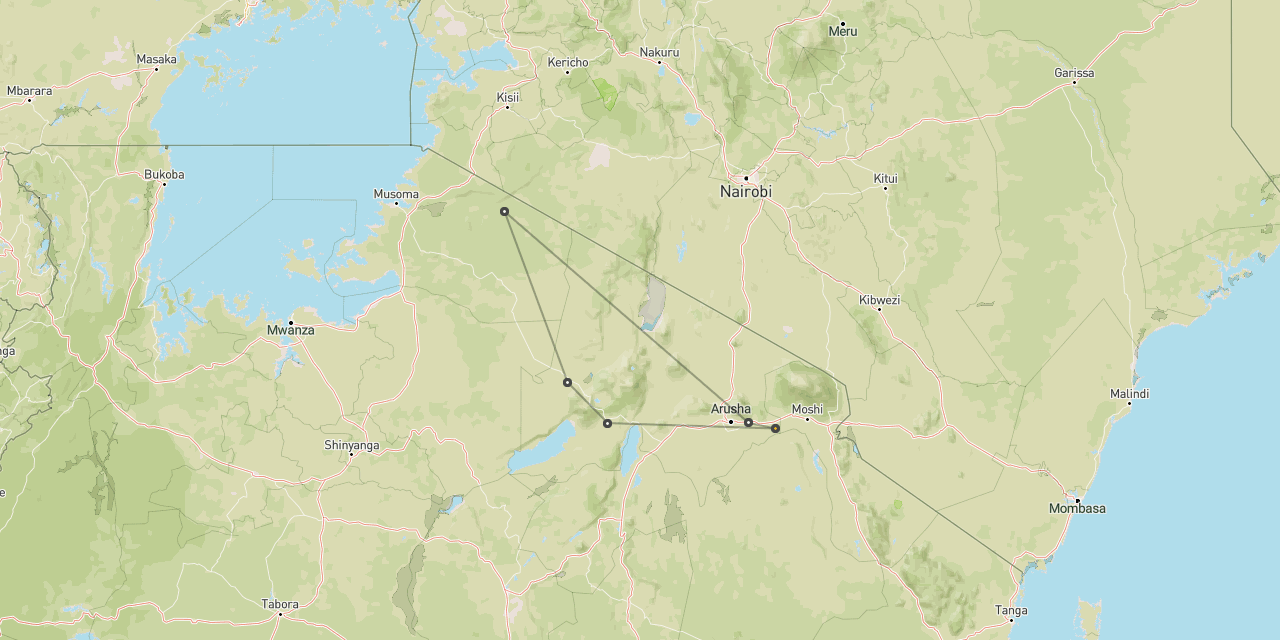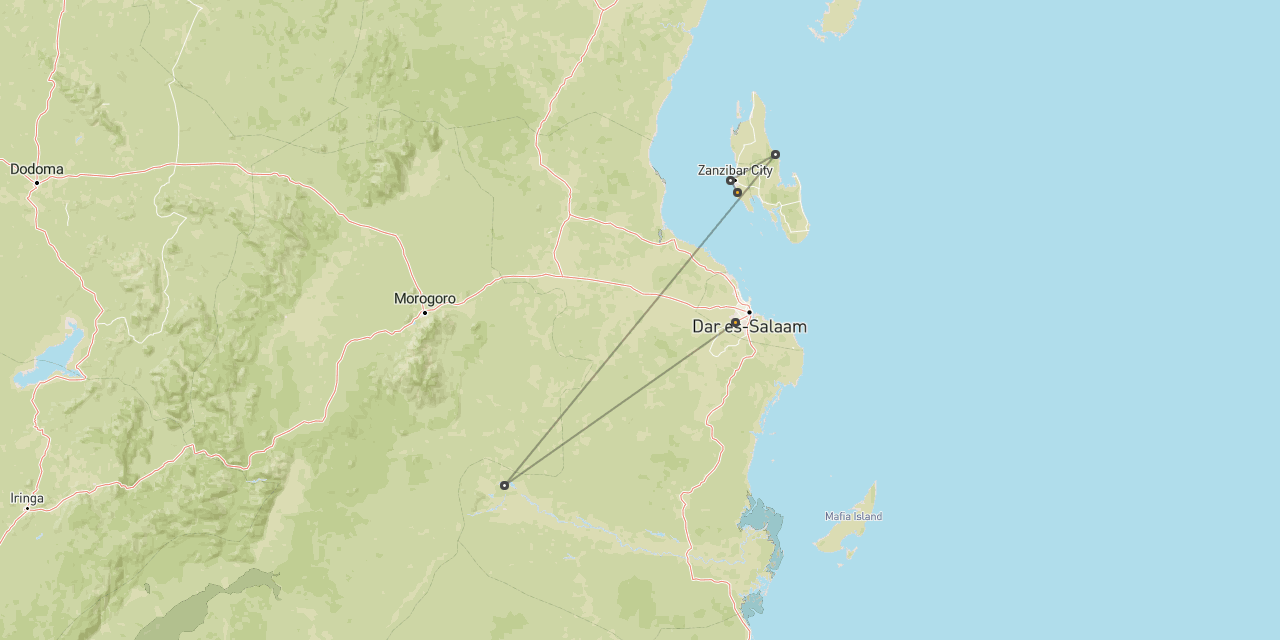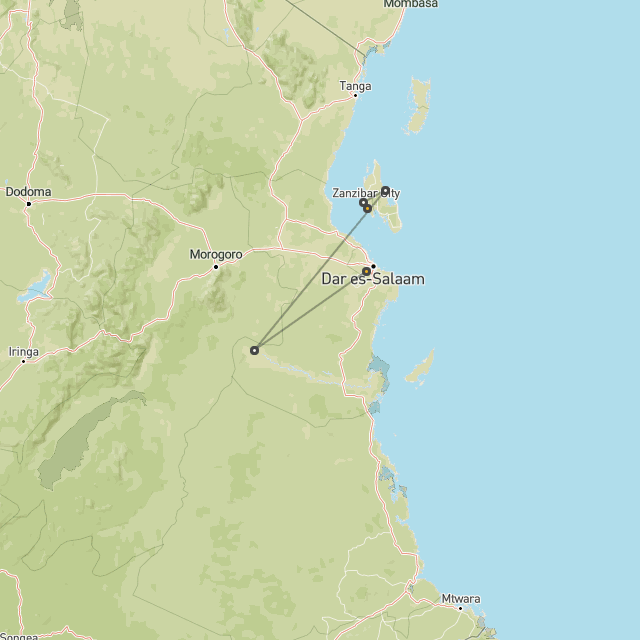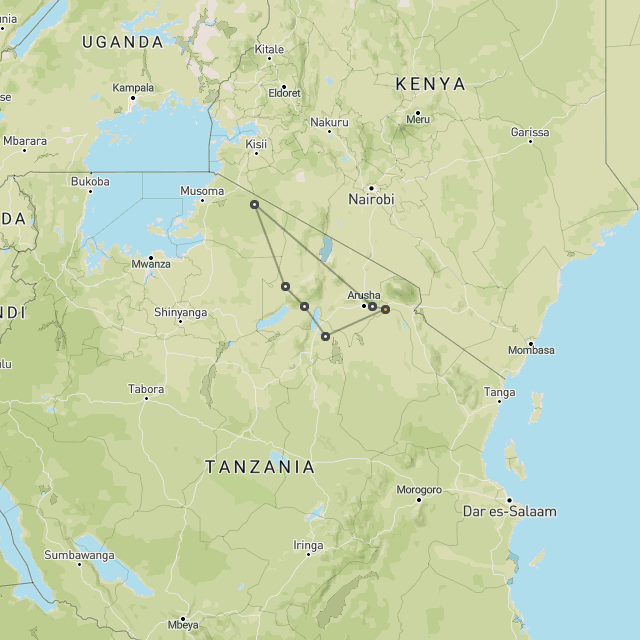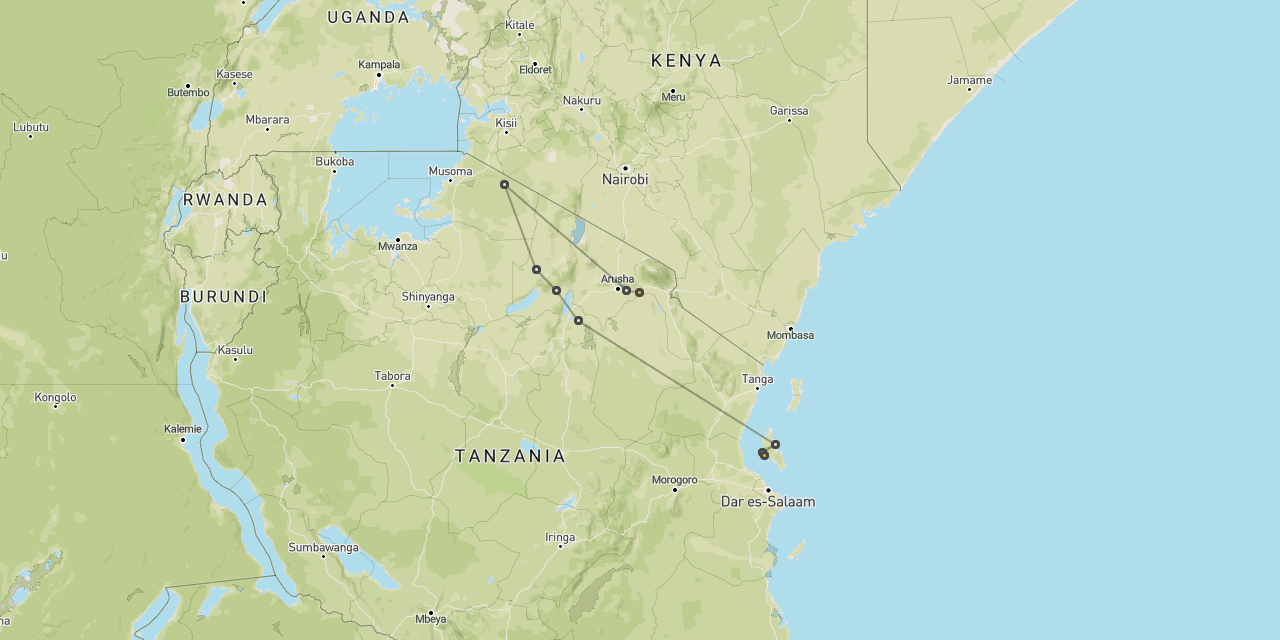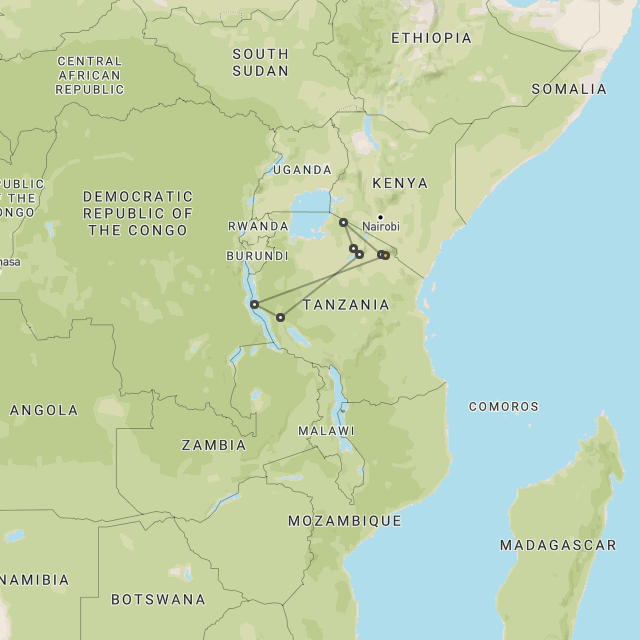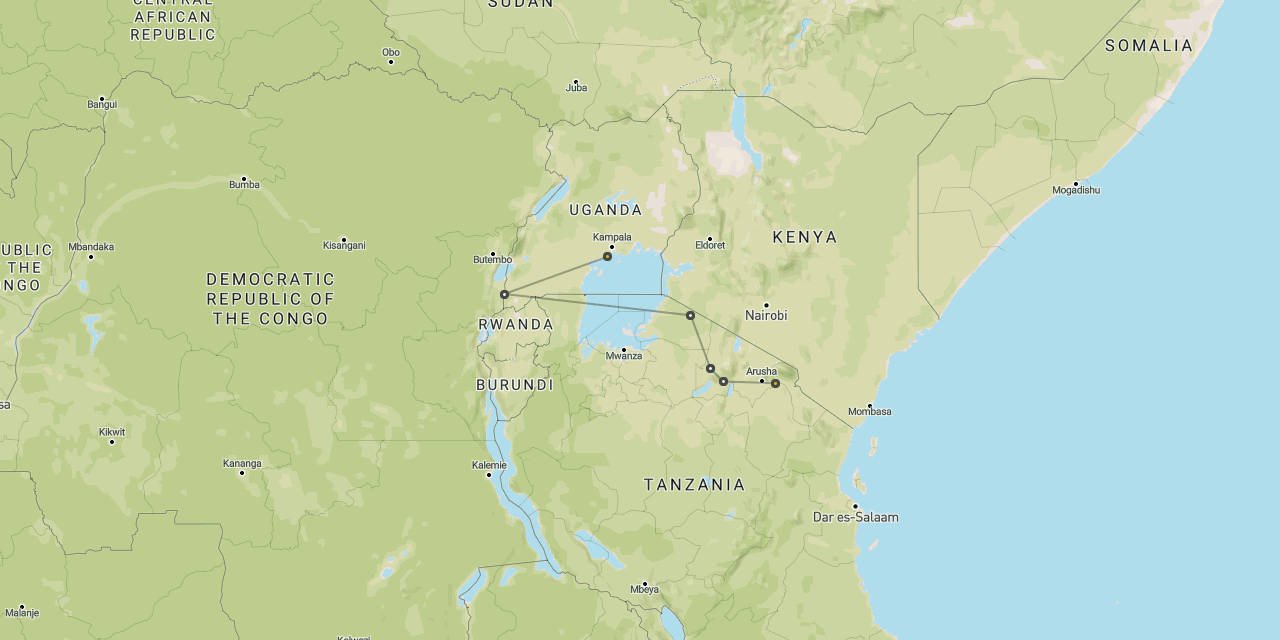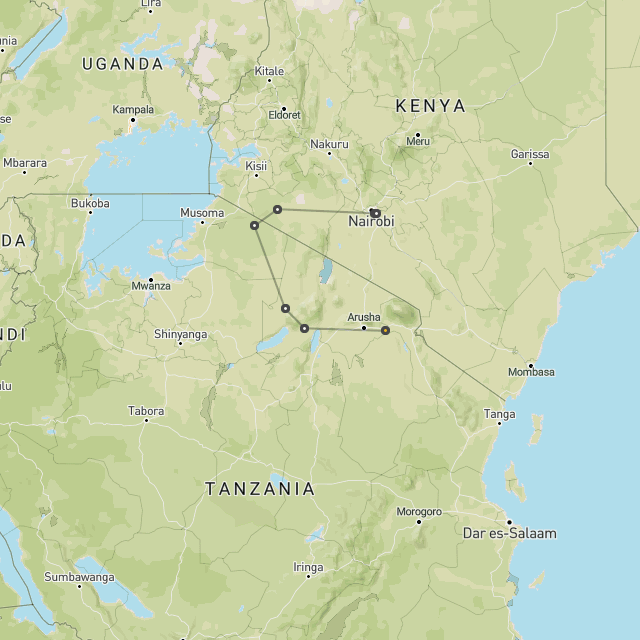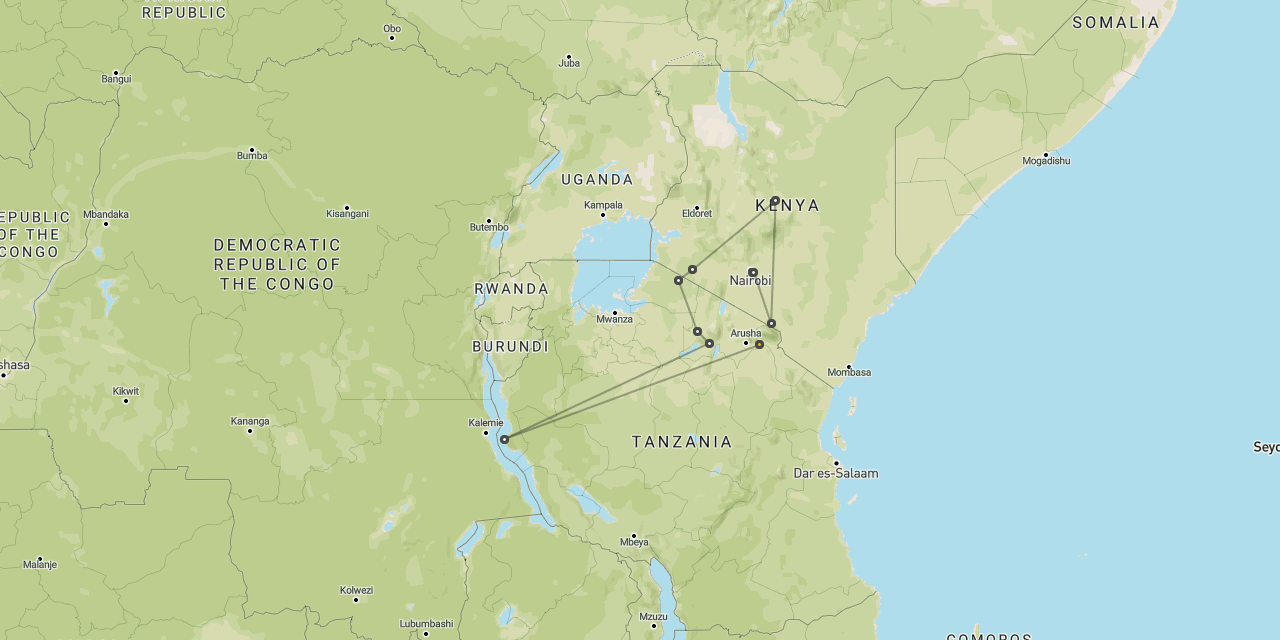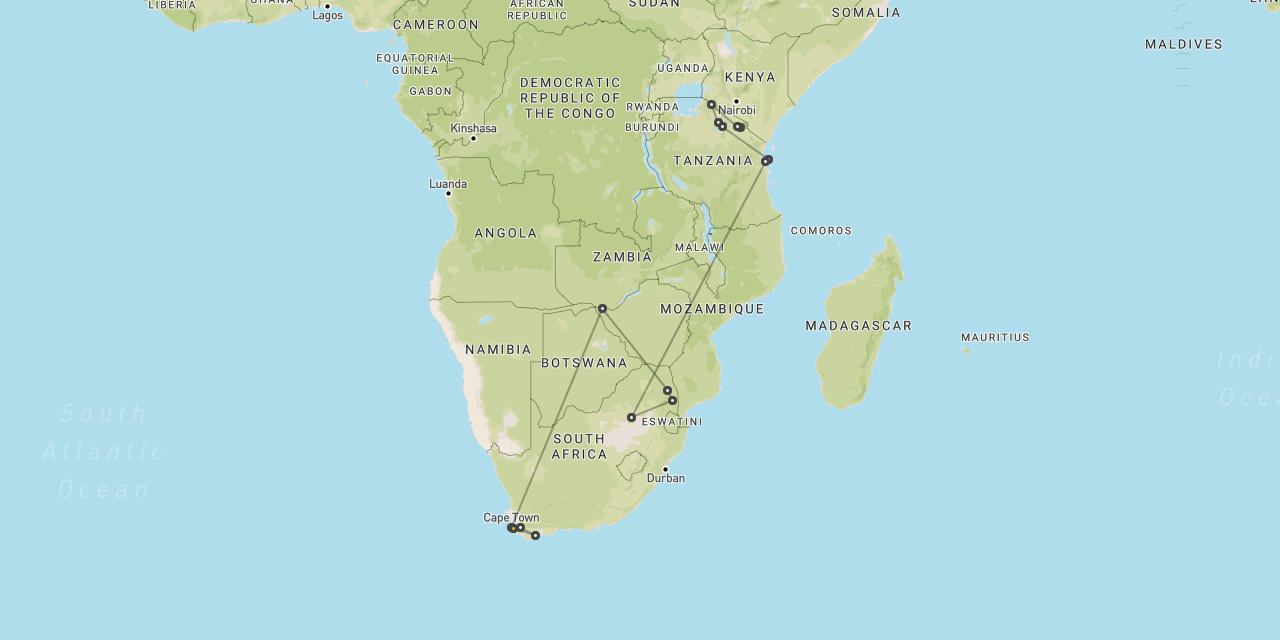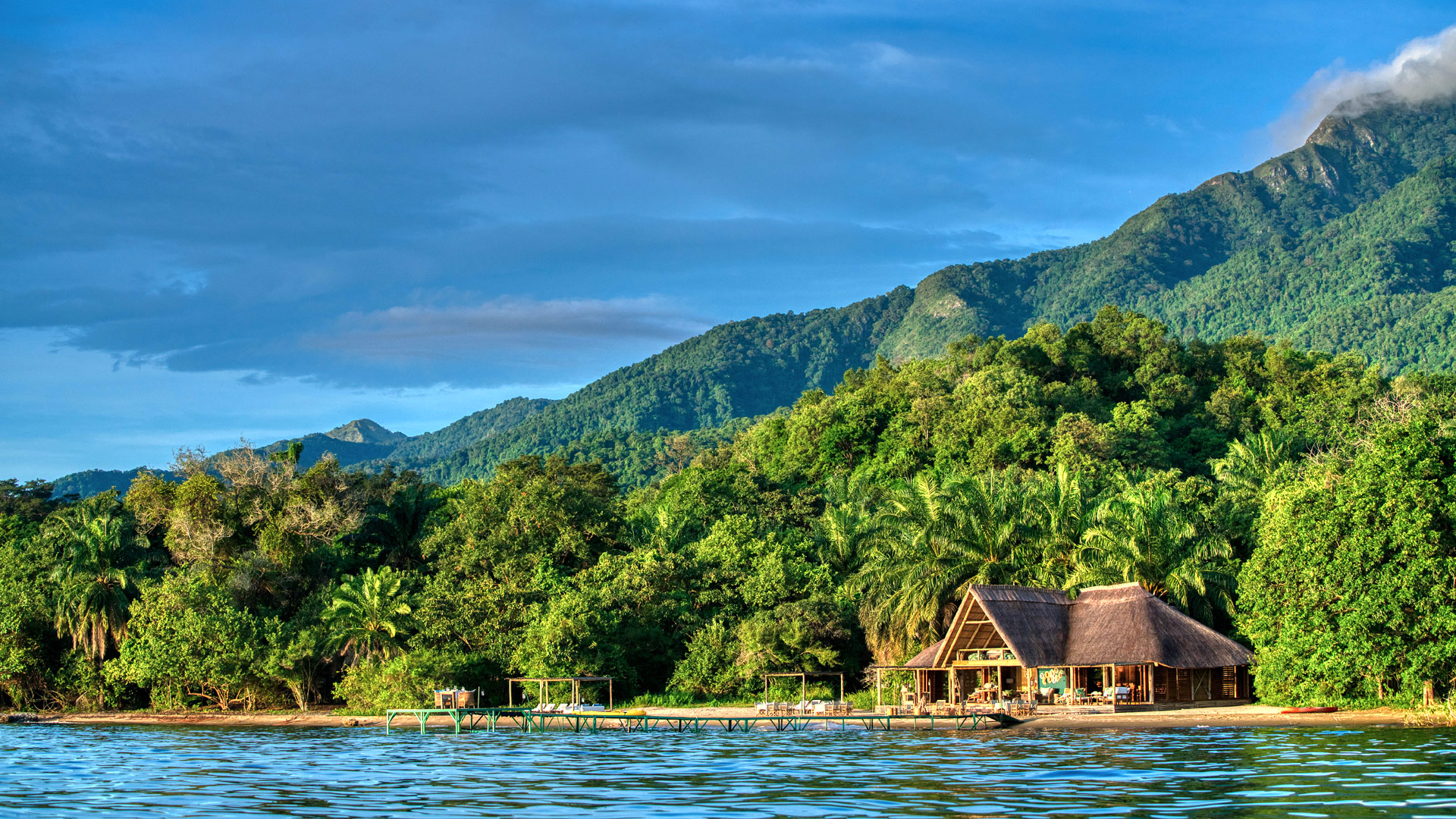
Mbali Mbali Mahale
Mbali Mbali
is a cool chimpanzee base
in the Mahale Mountains

a fantastic chimpanzee experience
Mbali Mbali Mahale is located in the Mahale Mountains area of western Tanzania.
This place has always had to endure the unfortunate sobriquet of being ‘the place around the corner from Greystoke Mahale Camp’.
Whilst its illustrious and pioneering neighbour still delivers a slightly more polished overall experience, Mbali Mbali Mahale is now viewed as a worthy competitor. It is also significantly lower cost and tends to have better availability, especially if you aren’t booking years in advance.
The 2-3 hour light aircraft flight on the way in tells, in no uncertain terms, of the awesome remoteness of this place. An hour by motorboat down the world’s second deepest lake and the camp looms into view, set on a white-sand beach, below the looming forested mountains.
Set on a pleasant beach, the camp itself is centred on a thatched mess building, with comfortable lounge and dining areas, leading out to a campfire.
Rooms
Guest accommodation at Mbali Mbali Mahale is in ten tented suites under thatch, each with an indoor bathroom and private verandah.
Activities
Mbali Mbali Mahale provides the following guided activities, not all of which are usually included in the price …
- Chimpanzee tracking
- Forest hiking
- Dhow sailing
- Kayaking
- Bush meals
Perhaps most importantly, the chimpanzee experience at both camps is very similar, using the same park rangers to find the same families of chimpanzees.
The chimpanzee tracking can range from sitting in camp watching them come to visit, to spending many hours hiking up slippery forest trails. You do need to be reasonably fit.
The core experience of finding yourself face-to-face with a wild chimpanzee is incredible. These are self-evidently smart animals, they know who you are and what you’re up to. It’s both unnerving and entrancing.
Make no mistake who’s in charge here in the forest. These guys are massive, they could tear you limb from limb if they chose to. Fortunately they don’t, they just want to go about their usual business as if you weren’t there.
Unlike the more passive gorillas, chimps are predators. If you are lucky, you may get to scramble after them whilst they swing easily through the canopy above on the hunt.
We have never, in our lives, felt more alive and exhilarated than we did when we emerged from the forest after our first chimp encounter.
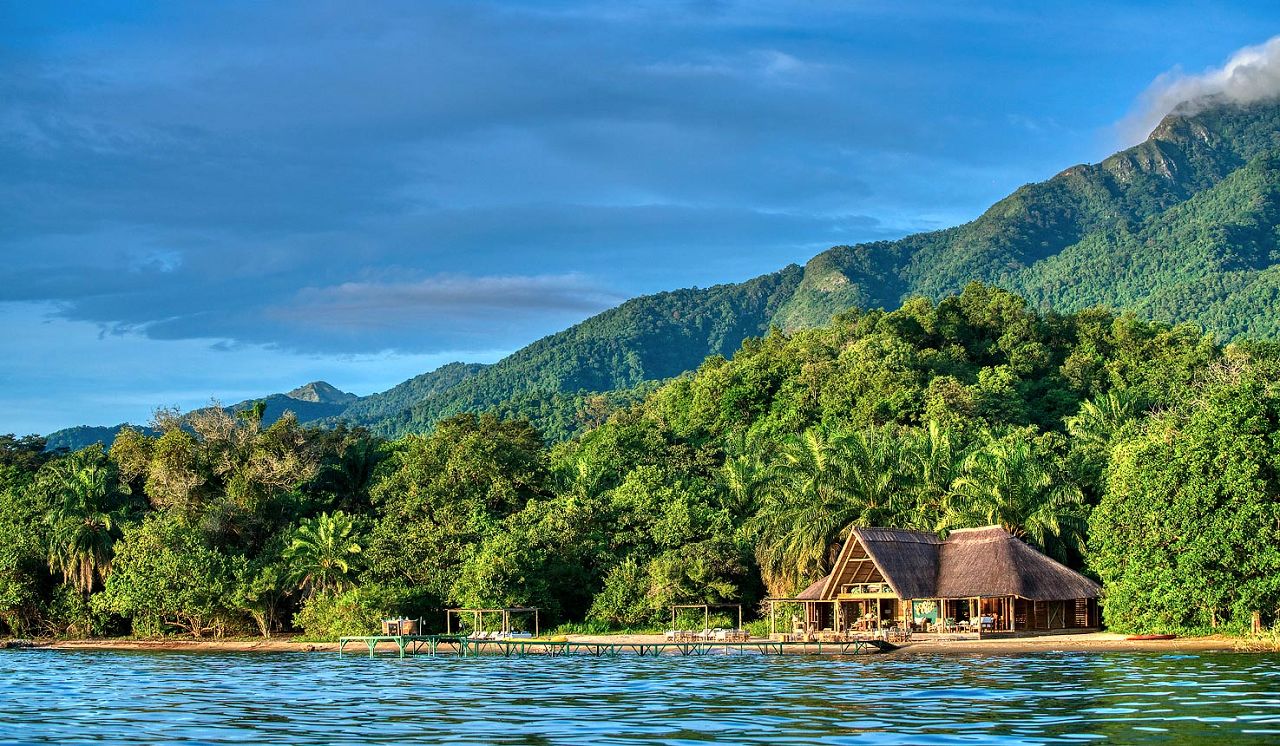
Gallery
Map
Mahale tends to feature in a disappointingly low proportion of trips to Tanzania. Although the allure and prestige of the location is well-established, this remains an costly place to visit in terms of both time and money.
The usual stay duration is 3-4 nights, depending on the flight schedules.
Seasonality
The most important aspect of a visit to Mahale Mountains, the actual chimpanzee viewing, is relatively reliable year round, but the weather and trekking conditions are definitely more favourable during the Jun-Oct dry season.
Dry season : Jun-Oct
The Jun-Oct dry season is the period which is conventionally considered to be the best time to visit Mahale Mountains, with reliably low rainfall and comfortable temperatures (although these can rise into October).
June should be considered something of a shoulder season, following on quite close after the rains. The camps are fully operational from the start of the month and general conditions should be pretty good. The only issue is that the chimps can be more difficult to find at this time as they go in search of fruiting trees higher up the slopes. This tends to be more pronounced during early June, but can continue right through to the middle of July.
Prime season is July to October, when the chimps tend to stick to the lower slopes along the lakeshore, even wandering into the camps from time to time, which should make for easier and more reliable sightings. In reality the situation is rather less predictable and the chimps can disappear over the hill for a while, but it’s very rare that they go out of range for long. With the weather being generally good, life in this part of the world is pretty good. Sailing on the lake, snorkelling, kayaking and just lying on the beach are a real pleasure. The only real issue is getting availability at the camps.
Green season : Nov-Mar
Throughout the preceding dry season, the rains tend not to fall away completely, but continue with intermittent light showers. But as October runs into November the rain can really start to become more persistent, although rarely to such an extent that it would ruin your trip. Chimp viewing tends to remain pretty reliable.
December, January and February carry on in the same vein, although with the risk of serious rains increases slightly as each month goes by, accompanied with the increased prospect of the chimps heading further afield and even going out of range for periods. Also, with the forest tracks becoming muddy and more difficult to traverse, this is definitely a period that suits more active guests.
The camps tend to remain open in March, largely to service visitors who are looking to combine with the great migration calving spectacle that is taking place in the Serengeti at this time. Conditions may not be ideal here, but a visit to Mahale even at this time remains pretty fabulous.
Rainy season : Apr-May
April represents the height of the rainy season and May continues to see the fallout from those events. All of the camps in the reserve usually close for the duration and air services from Serengeti are suspended.
Getting there
Mahale Mountains is most commonly accessed by the light aircraft services that come down from Arusha and Serengeti. It can also be reached from the south, via Ruaha and Katavi.
Once you have landed at the small airstrip just north of the reserve, your camp will collect you by motorboat for the 45 minute transfer down the lake.
It is also possible to access the reserve by a 3-4 hour motorboat transfer from the town of Kigali, further north on the lake. However getting to Kigoma is extremely difficult to do with any reliability, so we hardly ever use this route these days.
Once at Mahale, there are no roads or vehicles, so all activities take place either on foot or by boat.
a genuinely life-punctuating experience
let us know your thoughts about Tanzania
and we will help you create the perfect safari

Extraordinary tailor-made adventures,
from earthy and edgy to easy and extravagant
From around USD 2500 per person, you set the ceiling

Get started on your trip
It’s never too soon to get in touch, we are here to help with every stage of your planning.
Sample Trips
Here are some of our popular trip shapes
Best Lodges
We regularly inspect and photograph all of the the best lodges, to ensure that we always recommend the most suitable options
Key Locations
Take a look around related locations. Click ‘View more’ to explore locations further afield.
Where Next?
Where Next?
We offer trips to dozens of fabulous countries.
Might one of these might be your next great adventure?

Please rotate your screen.



















